62 F. average high (somewhere*).
49 F. high on April 25, 2016.
April 26, 1954: Extremely heavy downpours occur in Mora, where nearly 7 inches of rain would fall in a little over 10 hours.
* who writes this crap?

Perils of "Fake Spring" - March Relapse Imminent
"Humor is just another defense against the universe" griped Mel Brooks. I've found Minnesotans to be stoic, hard-working and upbeat. But locals quickly lose their sense of humor when snow falls on their green, freshly-mowed lawns.
This is why you don't plant annuals until after Mother's Day. A frost or freeze is possible Friday morning; another swipe of slush and frost early next week.
Even though winters are mellowing over time, the warming is "lumpy" - not uniform or consistent. We saw a freakishly warm February, with plants in full bloom a month early to our south. But late-season frosts/freezes are still a fact of life, resulting in crop damage when plants bloom prematurely. 90 percent of South Carolina's peach crop was just wiped out by a late freeze.
Expect an inch of rain today, ending as a few flakes by evening. A coating of slush may delight residents of central Minnesota, a few inches far north.
NOAA's GFS model pulls more rain, maybe spiked with snow, into town Sunday and Monday; a sloppy accumulation is not out of the question by Monday. On May 1.
Mayday! Mayday!
NAM snowfall prediction above: NOAA and Tropicaltidbits.com.
Another Soaker.
Check out the predicted rainfall amounts; over an inch of rain for much
of southern, central and northeastern Minnesota (where precipitation
will mix with ice and snow). Gulf moisture is reaching the Upper Midwest
now; every new storm dumping .5 to 1" or more of liquid equivalent.
Map: Aeris AMP.
What Month Is This Again? The National Weather Service in Duluth sent this graphic out, calling for a few inches of slushy snow, but a risk of as much as a third of an inch of glaze ice over the Arrowhead and North Shore. Travel will be problematic, especially tonight from Two Harbors to Lutsen and Grand Marais.

Non-Stop Parade of Storms. Which isn't all that unusual for late September, but the frequency of the storms sweeping across the USA is impressive. Today New England finally dries out as the East Coast looks forward to a well-earned warming trend. Heavy T-storms push into the Ohio Valley while rain ends as sloppy wet snow for Minnesota. A wet Wednesday for northern California and the Pacific Northwest gives way to drier skies Thursday and Friday.
Worst Flooding Since Hurricane Matthew Swamps North Carolina. USA TODAY has a good summary of the weather headaches in the Raleigh/Durham area: "People in North Carolina are paying attention to rising rivers after storms dumped several inches of rain across much of the state. Gov. Roy Cooper warned residents on Tuesday to stay wary after the state's heaviest rainfall since last year's Hurricane Matthew. State emergency management officials are warning of possible flooding along the Neuse River near Clayton and Smithfield, and the Tar River in Tarboro and Greenville. The rain caused disruptions to the morning rush hour, and several motorists also had to be rescued from their cars, according to ABC 11. Flood warnings were posted for rivers in 33 eastern counties..."
The Climate Context for Raleigh's Rains and Florida's Fires. Here's perspective from Andrea Thompson at WXshift: "...The number of heavy events has continued to be well above average over the last couple of years, maintaining the upward trend,” Ken Kunkel, a climate scientist with the North Carolina Institute for Climate Studies and N.C. State University, said in an email. A Climate Central analysis shows that by mid-century, heavy runoff from rain-driven inland flooding will increase between 20 and 40 percent. Of course, climate change isn’t the only thing that impacts flooding, as the built environment, such as impermeable pavement, exacerbates flooding in urban areas like Raleigh. While this area of North Carolina has seen about 400 percent of what would normally fall over the past two weeks, mostly from this storm, much of Florida has been left thirsting for storms to quench the dry conditions that are helping to fuel wildfires. The blazes have burned the largest area of the state since 2011, some 115,000 acres, and will likely cost millions of dollars in damage and fire fighting costs..."
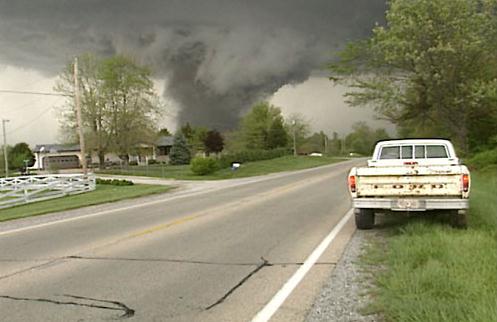
- False-alarm rate (FAR), the percentage of tornado warnings issued for storms that never touch down
- Probability-of-detection (POD), the percentage of warnings that accurately predict tornadoes
- “Lead-time,” the minutes between when a warning is issued and when the storm touches down
Portraits of the Earth-Moon System. The Atlantic has done a terrific job assembling some of the best photos of Earth and the Moon on one web link I've ever seen: "The Earth and its moon almost form a binary planet system. The moon is enormous—relative to the size of its planet—compared with the rest of the solar system. Since the 1960s, spacecraft and astronauts have been able to “step back” far enough to capture combined portraits of the Earth and its moon, separated by some 240,000 miles. Gathered below are some of the best of these portraits, some from as far away as 100 million miles..."
Image credit: NASA DSCOVR satellite. "Earth and the far side of the moon on July 5, 2016, also featuring Typhoon Nepartak over the Pacific Ocean, imaged by NASA’s Deep Space Climate Observatory (DSCOVR) satellite, about 1.5 million km (930,000 mi) from Earth."

The Impact of Weather on Auto Insurance Costs. A story at Yahoo Finance had a few nuggets I wasn't aware of: "...When
it comes to weather and auto insurance, there are several
misconceptions. In many cases, auto insurance policies have nothing to
do with the weather in an area because they simply do not reimburse for
damages caused by tornadoes, flooding and extreme weather in general.
Winter does not make auto insurance more expensive! A common
misconception that many drivers have involves snowy weather and auto
insurance. Many believe that during the winter months, prices go up due
to the worsening driving conditions. However, this is not true. In fact,
across the United states, December is the cheapest month to buy auto
insurance in..."
Today's Energy Jobs Are In Solar, Not Coal. Here's an excerpt from The New York Times: "...Last
year, the solar industry employed many more Americans than coal, while
wind power topped 100,000 jobs. Those numbers come from a Department of Energy report
published in January by the Obama administration that provides the most
complete picture available of American energy employment. In 2016, 1.9
million Americans were employed in electric power generation, mining and
other fuel extraction activities, according to the report – a field
we’ll call power creation for short. More than 373,000 Americans worked
part or full time in solar energy, and just over 260,000 of them – or
about 70 percent – spent a majority of their time on solar projects..."
Photo credit: "A wax worm, aka a plastic bag destroyer." (skeeze/Pixabay).
This Interactive Map Shows Why Renewables and Natural Gas Are Taking Over the U.S. Here's a snippet from Vox: "This one’s for the energy nerds out there. The University of Texas Austin’s Energy Institute has put out an incredibly useful interactive map
showing what types of power plants are cheapest to build in every
county in the continental United States. (No, really, it’s fascinating.)
Playing around with the map,
you can see why natural gas and renewables are likely to provide much
of America’s new electric capacity going forward. It also shows why, despite Trump’s promises,
it will be extremely difficult to build new US coal plants anytime
soon. And you can explore the effects a carbon tax might have on
America’s grid — or, say, the development of much cheaper nuclear
reactors..."

The Only Constant is Disruption. "Grandpa, tell me again how people once told other people the weather forecast!" Is this a conversation I'm going to have in 15 years? Will humanoids be optional, computers so powerfully pervasive that meteorologists go the way of Betamax and 8-tracks? I wish I knew, but there's little doubt all of us will have to adapt to careers of lifelong learning. With robotics, automation and artificial intelligence half of all current white collar jobs may go away. A century ago 41 percent of Americans were farmers; with mechanization only 2 percent of us farm today. How best to prepare for jobs that don't even exist yet? We need smart strategies that prepare us for these coming (seismic) shifts.
Image credit: David Gothard.
Photo credit: "Abandoned factory, Brattleboro, VT." Credit: Beyond My Ken Wikimedia (CC BY-SA 2.0)
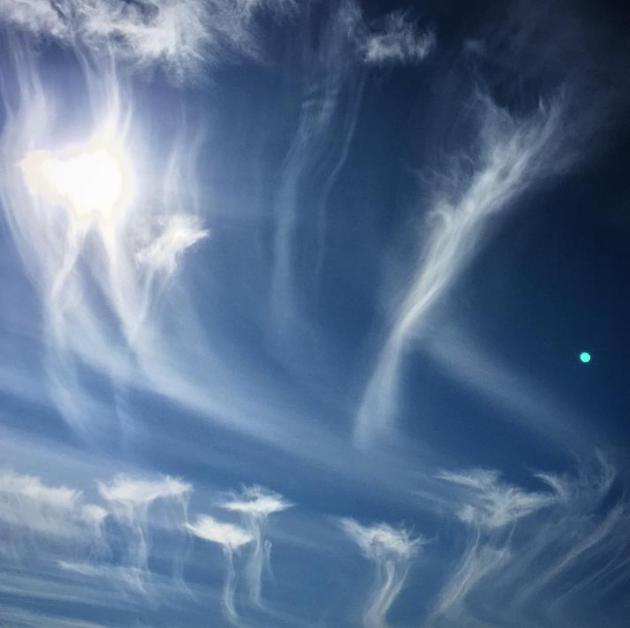
Is Singapore's "Miracle" Health Care System the Answer for America? Would Americans stand for a U.S. equivalent of "Medisave"? Here's an excerpt of a fascinating story at Vox: "...When
conservatives praise Singapore’s health system, they are typically
praising the Medisave system. Medisave is a forced savings plan that
consumes between 7 and 9.5 percent of a working Singaporean’s wages —
think of it like the Social Security payroll tax, if said tax funded a
health savings account. Singaporeans then pay for some routine care out
of their Medisave accounts. Conservatives like Medisave because it is
built on a deep appreciation for the idea that routine medical care can
be treated like any other good, and patients can be pushed to act like
consumers when buying it. Which is all true. Medisave distinguishes
Singapore’s system from that of the US or Western Europe, where insurers
typically cover most of the cost of routine care..."
Kitty
Hawk’s flying car, if you insisted on calling it a “car,” looked like
something Luke Skywalker would have built out of spare parts. It was an
open-seated, 220-pound contraption with room for one person, powered by
eight battery-powered propellers that howled as loudly as a speedboat.
The tech industry, as we are often told, is fond of disrupting things,
and lately the automakers have been a big target. Cars that use
artificial intelligence to drive themselves, for example, have been in
development for a few years
and can be spotted on roads in a number of cities. And now, coming onto
the radar screen, are flying machines that do not exactly look like
your father’s Buick with wings. More than a dozen start-ups backed by
deep-pocketed industry figures like Larry Page,
a Google founder — along with big aerospace firms like Airbus, the
ride-hailing company Uber and even the government of Dubai — are taking
on the dream of the flying car..."
Image credit: "Kitty
Hawk, a Silicon Valley company backed by Larry Page, a Google founder,
began testing a prototype over a lake in Northern California."

Photo credit: "Author Robert Pirsig and his son Chris in 1968. Pirsig, who wrote Zen and the Art of Motorcycle Maintenance, died Monday at age 88." William Morrow/HarperCollins.
“The least initial deviation from the truth is multiplied later a thousand fold.” – Aristotle
For People Who Can't Be Bothered With Real Mud. In an era of fake news it's only natural (organically pathetic) that a consumer can no purchase blue jeans with fake mud for only $425. No need to "work outside" and earn your mud the hard, invigorating way. No, now you can buy mud-cred the old fashioned way. With your credit card. God help us all.
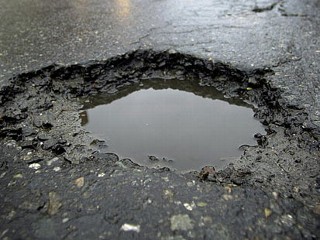
TODAY: A cold, heavy rain tapers. Winds: N 10-20. High: 45
WEDNESDAY NIGHT: Few sprinkles or flurries. Low: 34
THURSDAY: Feels like March. Mostly cloudy skies. Winds: NW 10-15. High: 42
FRIDAY: Early frost risk. Partly sunny and cool. Wake-up: 33. High: 53
SATURDAY: Drier day of weekend. Clouds increase. Winds: NE 10-15. Wake-up: 39. high: 54
SUNDAY: Rain may mix with wet snow. Really. Winds: N 15-25. Wake-up: 38. High: 43
MONDAY: Mix slowly tapers. Slushy lawns early? Winds: N 10-20. Wake-up: 34. High: 44
TUESDAY: Sunny breaks, vague hints of spring. Winds: NW 7-12. Wake-up: 36. High: 57
Climate Stories....
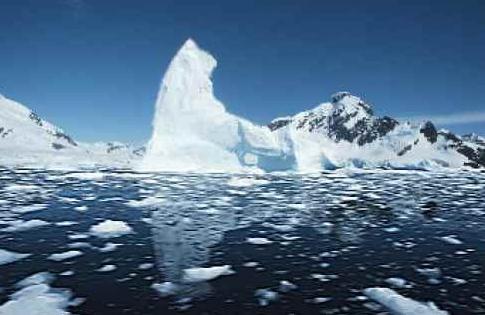
Extreme Arctic Melt is Raising Sea Level Rise Threat; New Estimate Nearly Twice IPCC's. Here's a clip from a story at InsideClimate News: "Global
sea level rise could happen at nearly twice the rate previously
projected by the U.N. Intergovernmental Panel on Climate Change, even
under the best scenario, according to a new report. By the end of this
century, as some glaciers disappear completely, the Arctic's
contribution to global sea level rise will reach at least 19 to 25
centimeters, according to the report by the Arctic Council's Arctic
Monitoring Assessment Program (AMAP). Factoring those numbers into
projections about other sources of sea level rise results in a minimum
of 52 centimeters of sea level rise by 2100 under a best-case scenario
and 74 centimeters under business as usual. "These estimates are almost
double the minimum estimates made by the IPCC in 2013," the authors
wrote..."
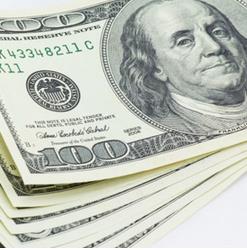
Can We Fight Climate Change With Trees and Grass? Here's an excerpt from MIT Technology Review: "Can we use trees and other plants as a weapon in the fight against climate change? Earth's greenery comes with natural carbon-capturing abilities, but now several studies are investigating how to tweak those tendencies to have a maximum impact on carbon dioxide levels in the atmosphere. In 2014, the Intergovernmental Panel on Climate Change announced that plants would have to be a major part of the world’s efforts to capture CO2. The idea would be to have trees and grasses suck up CO2 as they grow, then burn or process them into fuels to generate power while capturing any CO2 produced along the way. This process is known as “bioenergy plus carbon capture and storage,” or BECCS. We’re starting to see increasingly large tests of the technology roll out..."
Photo credit: "U.S. Rep. Brad Schneider moderates a climate change panel at the Chicago Botanic Garden on Saturday, featuring, from left to right, Donald Wuebbler, professor of atmospheric science at the University of Illinois; Gregory Mueller, chief scientist and Neagunee Foundation vice president of science at the Chicago Botanic Garden; Elisabeth Moyer, associate professor at the Energy Policy Institute at the University of Chicago; and Tom Skilling, chief meteorologist for WGN-TV." (Lee V. Gaines / Pioneer Press)
The Earth Just Reached a CO2 Level Not Seen in 3 Million Years. Hey
c'mon - you're hyping this, all you crazy warmists - you alarmists!
People like warm weather - I mean what can possibly go wrong? Here's an
excerpt from ThinkProgress: "...Carbon dioxide in the Earth’s atmosphere, for the first time in modern record-keeping, has surpassed 410 parts per million. Since measurements began in the 1950s at Mauna Loa, atmospheric concentrations of carbon dioxide have increased 42 percent increase
from pre-industrial levels. Children born today will likely never live
in a world with levels below 400 parts per million. The last time Earth
had comparable levels of atmospheric carbon dioxide was about three
million years ago, during the mid-Pliocene. Back then, global average
temperature was about 3.6–5.2°F (2–3°C) warmer than it is today. Sea levels were also higher, by about 15–25 meters..."
Graphic credit: "The Keeling Curve." CREDIT: Scripps Institute of Oceanography.
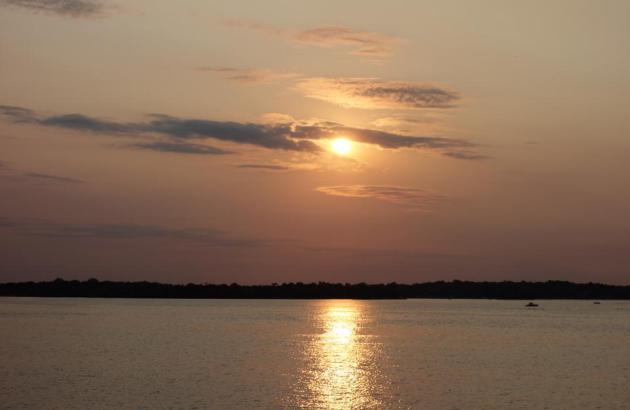
Record-Breaking Global Climate Events Already Being Shaped by Global Warming, Scientists Find. Here's an excerpt from The Washington Post: "...In a new study,
published Monday in the journal Proceedings of the National Academy of
Sciences, they’ve analyzed the influence of global warming on extreme
climate events, such as record-breaking temperatures or rainfall, all
over the world. And they’ve found that climate change has had a
substantial effect. The study suggests that anthropogenic global
warming, as it has advanced, has had a significant hand in the
temperatures seen during the hottest month and on the hottest day on
record throughout much of the world. It finds that climate change
substantially increased the likelihood of these record warm events
occurring in the first place, and also made them more severe than they
otherwise would have been, in more than 80 percent of the observed
world. “This suggests that the world isn’t yet at a place where every
single record-setting hot event has a human fingerprint, but we are
getting close to that point,” said Noah Diffenbaugh, a climate scientist at Stanford University and lead author of the new paper..."
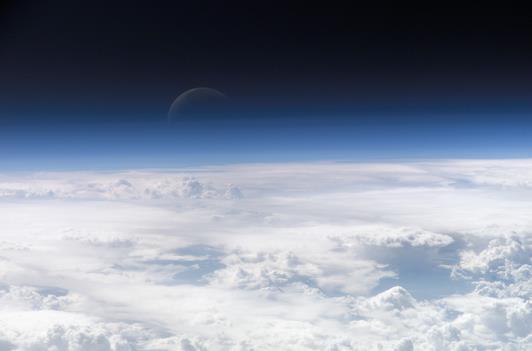
Science is Disruptive. Clifton Leaf, Editor in Chief at Fortune, had a profound post that caught my eye; here's an excerpt that resonated: "...The
very existence of science is disruptive—because the tool is designed to
undercut belief, to challenge both the sacred and the prosaic. The aim
of science is disprove the comfortable assumptions of life, not to
reinforce them. And since the time of Galileo, it has been seen as a
threatening interloper to those in power and to everyday existence. The
notion of human-caused planetary warming threatens the status quo, no
less than the notion of a solar-centric universe dislodged the
consecrated cosmology of the 17th century. The unavoidable message
today: Governments, businesses, and consumers can’t keep doing what
they’re doing without the risk of having an iceberg float into New York
Harbor. So, too, the latest fruits of science, technology, engineering,
and mathematics—from artificial intelligence to self-driving vehicles to
advanced robotics—threaten existing industries and the people who work
in them even as they promise to create brand new industries and jobs to
replace them..."
Image credit: NASA.
What Americans Really Think About Climate Change. It seems a little like random violence - it will happen to someone else. There's no way it can happen to me! Here's an excerpt from The Atlantic: "...Climate change is a “stuck” issue in American politics. The polling continually points to a larger conclusion: Global warming is a highly partisan issue that most voters do not consider particularly significant to them, personally, even if they are worried about it. A Yale poll from last month put it starkly: More than 50 percent of Americans believe that climate change will “harm people in the United States,” but fewer than 40 percent of Americans believe it will “harm me, personally.” A lot of people know about climate change, and a lot of people think it is generally bad. But they do not change their votes because of it. Americans may change their vote because of economic fear, or defense policy, or to protect their property or social privileges. But they do not vote because the ice caps are melting. This is the heart of the climate issue..." (Image credit: NOAA NCDC).
Rising Seas Will Send Millions of Refugees to Inland Cities.
Alarmist hype? After Katrina struck New Orleans in 2005 400,000 people
fled inland; many never returned. Extreme storms will accelerated the
movement away from water, based on new research highlighted at NexusMedia: "When
rising waters from superstorms like Katrina or Sandy inundate heavily
populated coastal communities, vast numbers of people will abandon their
destroyed homes and flee for safety and shelter elsewhere. Where will
they go — and how will their destination cities cope with them? That’s
the focus of a new study
that projects as many as 13.1 million Americans could become climate
refugees by the end of this century, an influx of people that could
stress inland cities, particularly those already grappling with
population growth, urban development, traffic congestion and water
management. “We typically think about sea-level rise as a coastal issue,
but if people are forced to move because their houses become inundated,
the migration could affect many landlocked communities as well,” said
Mathew Hauer, a demographer at the University of Georgia and author of
the study, published in the journal Nature Climate Change.
“For many inland areas, incorporating climate change scenarios into
their strategic long-range planning would be an appropriate strategy...”
Map credit: "Net changes in population by metropolitan area due to migration from sea-level rise." Source: Nature Climate Change
Photo credit: "Pontchatoula residents flee rising waters in 2016. A new study predicts that thousands of Louisiana residents will be heading to Texas and other states to avoid rising sea levels over the next century." (Photo by Ted Jackson, Nola.com | The Times-Picayune).
Photo credit: Richard at Flickr.
Photo credit: "A rescuer of the Malta-based Migrant Offshore Aid Station carries a migrant baby rescued from a wooden boat in the Mediterranean Sea off the coast of Sabratha in Libya this month." (Darrin Zammit Lupi/Reuters)
More and More Fossil Fuel Companies Support a Carbon Tax - Here's a Running List. Who would have predicted this a year or two ago? Here's an excerpt from Quartz: "...Royal Dutch Shell ($233 billion) “If Trump does not go down the path of a carbon tax, we should not lose our resolve. We should stick to our values as Canadians to do something to protect the environment.” — Michael Crothers, President of Shell Canada, November 2016. “Carbon-pricing systems encourage the quickest and most efficient ways of reducing emissions widely.” — Ben van Beurden, CEO of Royal Dutch Shell, October 2015.
Exxon Mobil ($218 billion) “One option being discussed by policy makers is a national revenue-neutral carbon tax. This would promote greater energy efficiency and the use of today’s lower-carbon options, avoid further burdening the economy, and also provide incentives for markets to develop additional low-carbon energy solutions for the future.” — Darren Woods, CEO of Exxon Mobil, February 2017..."
Photo credit: "Stopping the tragedy of the commons." (Reuters/Edgar Su)
No comments:
Post a Comment